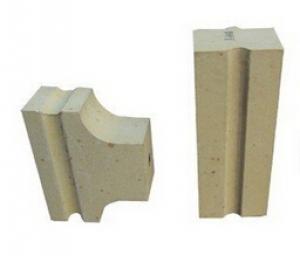Silica Insulation Brick for Hot Blast Furnace Applied Refractory
- Loading Port:
- China Main Port
- Payment Terms:
- TT OR LC
- Min Order Qty:
- -
- Supply Capability:
- -
OKorder Service Pledge
OKorder Financial Service
You Might Also Like
Specifications
refractory silica brick
ISO9001
one of the largesr manufacture
factory price
fast delivery
Hot blast furnace&glass furnace applied refractory silica brick
Introduction of refractory silica brick
Refractory silica brick is dense shaped refractory material and the main materials is SiO2.
Features of refractory silica brick
1) Silicon oxide is above 95%.
2) Good acid glass furnace erosion resistance.
3) High softening point with temperature.
4) No shrink in burn repeatedly.
5) Temperature of refractoriness under load is above 1650º C
Stable Capability, High Quality, Excellent Service, Competitive price is the most important advantage of our products.
Our capacity:
We have 2 tunnel kiln with 168meters length and 25 sets of compressing machine with 300-500tons capacity. with the annual capacity more than 50,000tons .
Application of refractory silica brick
They are widely used for hot blast furnace,coke oven,glass furnace.The products can be made according with the customers' requirement.
Physical and chemican index:
| MARK | JG-95 |
|---|---|
| Bottom, WallOthers | |
| SiO2,% ≥ | 95 |
| 0.2Mpa Refractoriness Under Load , °C ≥ | crystal silica :1650 cementation silica (ShanXi province): 1620 |
Permanent Linear Change after heating(%), 1450°C×2h(P.L.C) | +0.2 0 |
| Apparent Porosity(A.P),% ≤ | 22(23)24 |
| Cold Crushing Strength(C.C.S), Mpa ≥ | 3025 |
| Real Density g/m3 ≤ | 2.342.35 |
| Rate Of Thermal Expansion (R.T.E)(1000°C),% ≤ | 1.281.30 |
| Residual Quartz (%) ≤ | 1 |


- Q: Physical solid waste disposal
- Reduce crack production and improve yield. The amount of addition is related to the shape and weight of the brick. The bricks can be added to 20% weight less than 25kg; bricks above 25kg can be added to 30%; for the specific type of brick can be added 30%. into waste silica brick should pay attention to this problem
- Q: Semisilica brick, clay brick, high alumina brick and what is the difference?
- This is a kind of refractory material is divided into three types: semisilica brick (A12O315 ~ 30%), clay brick (A12O330 ~ 48%), high aluminum brick (A12O3>48%).
- Q: Which material is good for furnace refractory?
- Neutral refractory is mainly composed of alumina, chromium oxide or carbon. Corundum products containing more than 95% of alumina are a kind of high quality refractory materials with a wide range of uses. Chrome brick with chromium oxide as its main component has good corrosion resistance, but its thermal shock resistance is poor, and its deformation temperature is lower at high temperature. Carbon refractories with carbon bricks, graphite and silicon carbide products, low coefficient of thermal expansion, high thermal conductivity, good thermal shock resistance, high strength, resistance to acid and salt corrosion, especially weak acid has good resistance, without wetting of the metal and slag, light. It is widely used as lining material of high temperature, and also used as lining of autoclave in petroleum and chemical industry.
- Q: The brick is mainly used in the place?
- Partitions used in coking and combustion chambers for coke ovens
- Q: Can iron oxide be used as refractory material?
- Is widely used in this area. Mentioned refractory material of high school textbooks generally refers to three two aluminum oxide (alumina), alumina is also used as a refractory material, refractory crucible, porcelain, artificial gemstones.
- Q: How to improve the thermal conductivity of the coke silicabrick rate?
- To improve the thermal conductivity of silica brick for coke oven rate method:Manufacture of high density and high thermal conductivity of silica brick, adding additives such as CuO, Cu2O, TiO2, Fe2O3, (FeO), can improve the thermal conductivity of silica brick.
- Q: The chemical composition of silica brick and its physicochemical index?
- ????Al2O3 SiO2??????fe2o3??????cao???????r2o93~98?0.5~2.5?;;?0.3~2.5??0.2~2.7;??1~1.5;
- Q: What is the silica refractory products?
- High silicon content in high temperature expansion sintering temperature between 1390-1410 in furnace arch
- Q: High temperature refractory material?
- Many kinds of refractory materials, usually by refractoriness level is divided into ordinary refractory materials (1580 to 1770 DEG C), advanced refractories (1770 to 2000 DEG C) and special refractories (more than 2000 DEG C); according to the chemical characteristics into acid refractory material, refractory materials and basic refractory materials. In addition, the refractory material used for special occasions.Now the definition of refractory materials, has not only depends on whether the refractoriness at 1580 DEG. Refers to the current refractories used in metallurgy, petrochemical, cement, ceramics and other production equipment with inorganic non-metallic materials.
- Q: Physical solid waste disposal
- The amount of addition is related to the shape and weight of the brick. The bricks can be added to 20% weight less than 25kg; bricks above 25kg can be added to 30%; for the specific type of brick can be added 30%. into waste silica brick should pay attention to this problem
Send your message to us
Silica Insulation Brick for Hot Blast Furnace Applied Refractory
- Loading Port:
- China Main Port
- Payment Terms:
- TT OR LC
- Min Order Qty:
- -
- Supply Capability:
- -
OKorder Service Pledge
OKorder Financial Service
Similar products
Hot products
Hot Searches
Related keywords
























